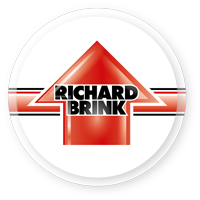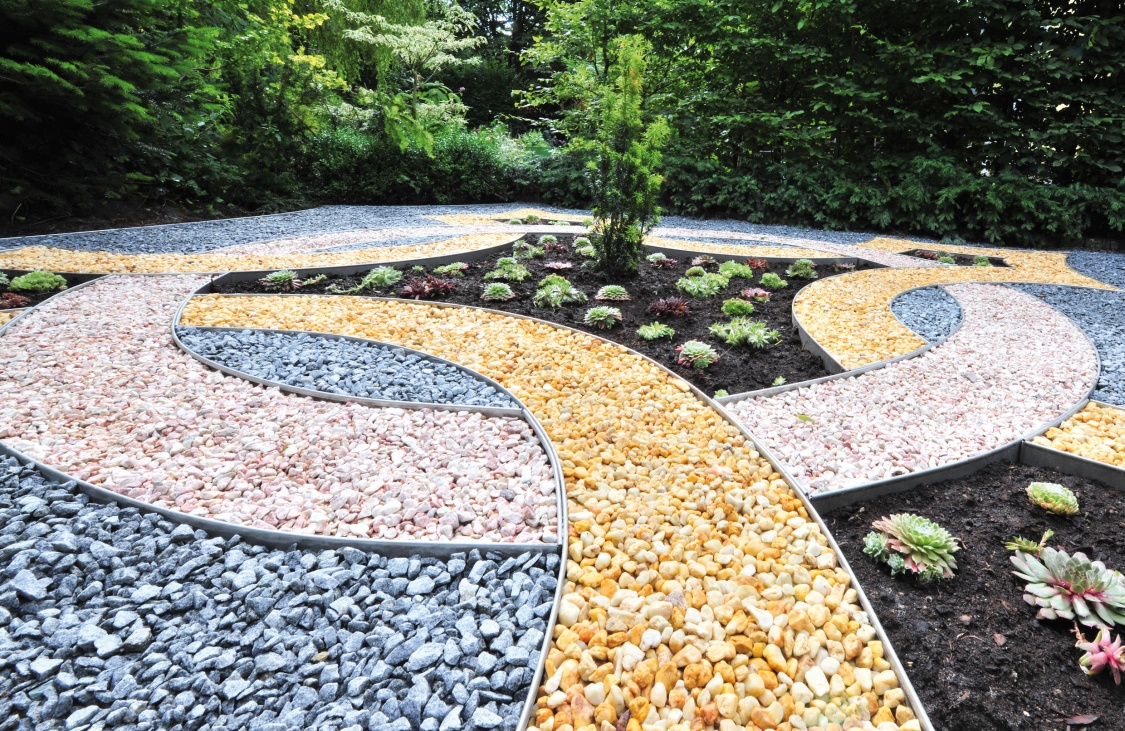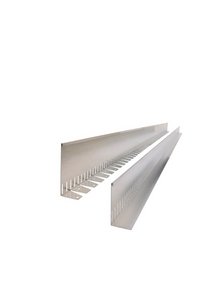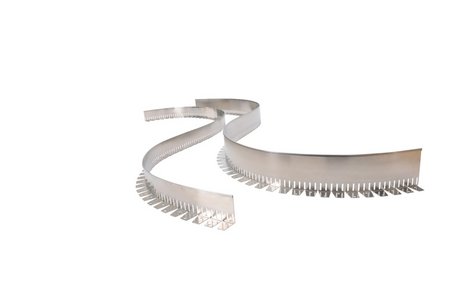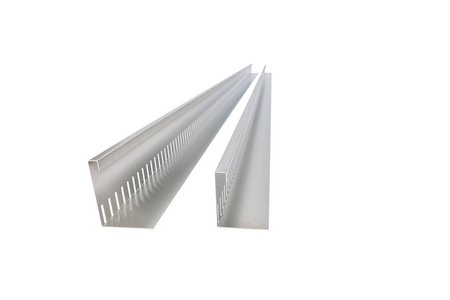Dividing up spaces in a way that creates harmony is an important aspect of garden design. Granulates and fills can be used to create individual designs. Richard Brink GmbH & Co. KG offers substrate rails to keep the different materials carefully separated. The systems prevent substrates from mixing. They allow designers to give outdoor areas shape and arrange beds and spaces.
Straight or round
There are virtually no limits when using substrate rails for roof landscaping and substrate beds to design outdoor spaces. The specialist in dewatering technology produces the systems in two versions: the BE SUS variant with its flexible and rigid forms makes any design possible. It resembles the edging solutions offered by Richard Brink and is available in heights of 100 and 150 millimetres. The look of the rigid KFL SUS model is based on Richard Brink’s gravel stops. With its dual backward bend of 15 × 15 millimetres at the head, it elegantly accentuates the garden aesthetic. The manufacturer makes the KFL SUS in heights of 80 and 100 millimetres as standard. Both substrate rail variants are available in aluminium or stainless steel.
Easily extendible
The difference in design between the product innovations and the edging solutions lies in the series of perforated drainage holes above the rail foot, which allows precipitation to drain away and effectively prevents pooling. This feature is especially advantageous on landscaped roof surfaces, where excess water cannot simply be absorbed into the ground. Backward bends also allow both models to be easily extended using connector plates. These plates are simply inserted into the rails and fastened using screws. They ensure seamless transitions between the rail sections. Backward bends and connector plates also lend the systems additional stability.
